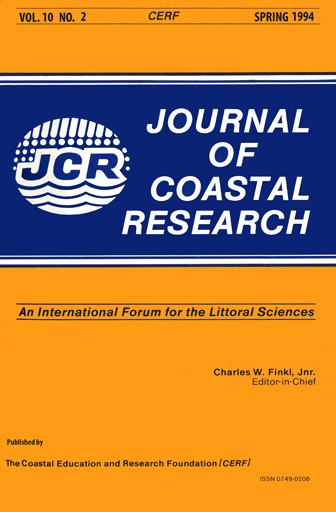Cross-shore and Longshore Sediment Size Distribution on Southern Currituck Spit, North Carolina: Implications for Beach Differentiation
Keywords:
Factor analysis, grain-size distribution, beach sediments, bimodal sedimentsAbstract
Beaches along the North Carolina coastline between Corolla and Oregon Inlet only a few kilometers apart are markedly different. Beaches at Duck are narrow and steep with strongly bimodal sediments. In contrast, beaches at Corolla and Coquina are broad and flat with mainly medium to fine unimodal sands. The occurrence of proximate beaches with different morphosedimentary characteristics provides a opportunity to improve our knowledge about the spatial and temporal grain-size distributions across beaches. Using Q mode factor analysis, 178 surficial sediment samples from Duck and Coquina beaches representing three and one half years of sampling at monthly intervals were analyzed. The cross-shore patterns which represent an average of the sedimentary processes occurring under fair weather and storm conditions indicate that coarse sediments are concentrated on the backshore. In contrast, fine sediments show a tendency to be concentrated landward or shoreward of this zone. Using the Q-mode factor model, 350 new sediment samples from beaches located between Duck and Oregon Inlet were "mapped" in the factor space defined by the Duck-Coquina data set. The study demonstrates that Q-mode factor analysis simplifies the relationship among the grain-size characteristics of sediment samples obtained across beaches with different sediment texture. The along-coast results indicate that there are several localized sources of coarse relict sediments between Duck and Oregon Inlet. Previous sedimentologic, stratigraphic and seismic data offshore and landward of the barrier substantiate these findings and demonstrate that differences in subaerial beach morphology and morphodynamic behavior in the area are primarily due to the availability of coarse relict sediments from the paleodrainage of the Albemarle River.


